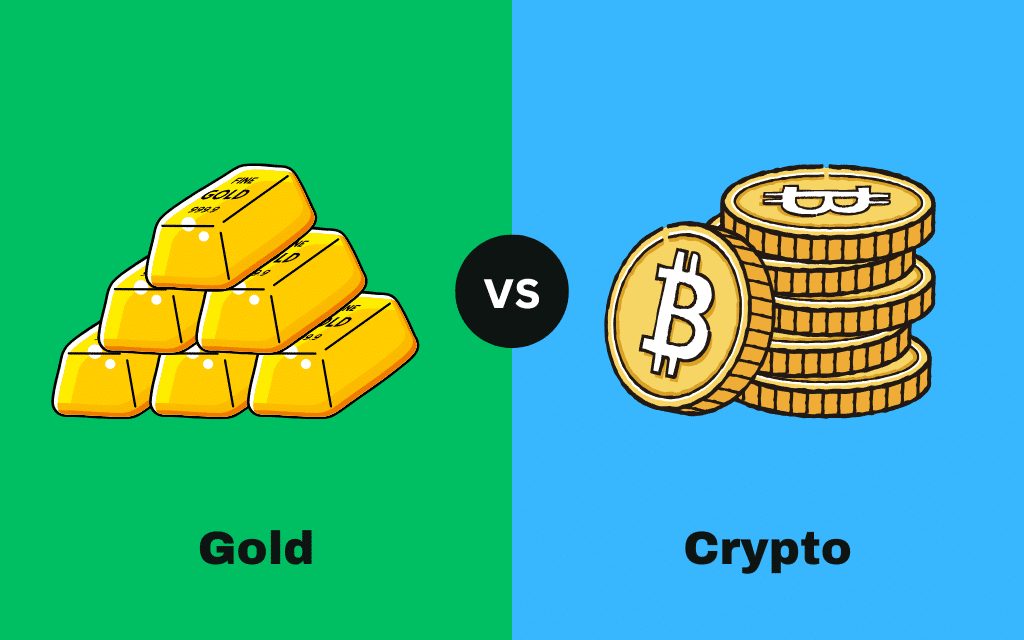Key Takeaways
- Rolling over a 401(k) to an IRA usually gives you more investment options and lower fees while preserving tax‑advantages.
- A direct rollover—where funds move directly between custodians—is the easiest and safest way to avoid taxes or penalties.
- An indirect rollover requires reinvesting the funds within 60 days or else you’ll face taxes and potential penalties.
- Rollover IRAs offer flexibility, but may sacrifice benefits like creditor protection, loan access, or delayed RMDs that 401(k)s sometimes allow.
There were several decisions to make when I changed career paths, including whether to pursue a 401(k) to IRA rollover.
A 401(k) is an employer sponsored plan, meaning it is a type of employer sponsored retirement plan provided by your employer to help you save for retirement.
These employer sponsored retirement plans are commonly rolled over into individual accounts like IRAs when you change jobs.
After researching my options, I decided to roll over my 401(k). To facilitate the rollover process, it was necessary to coordinate with my former employer and the plan provider.
Now, I’ll walk you through the process to help you make the best decision for your situation.
What is a 401(k) rollover & how it works?
A 401(k) rollover is when you move your retirement savings from an old employer’s plan into your new employer’s plan or into an IRA (Individual Retirement Account).
Other workplace plans like 403(b) or 457(b) can also be rolled over into an IRA.
Common rollover options:
- Traditional 401(k) → Traditional IRA
- Roth 401(k) → Roth IRA
- Traditional 401(k) → Roth IRA (taxes may apply)
- Old 401(k) → New employer’s 401(k) (if allowed)
Most people choose to roll over into an IRA rather than a new 401(k).
IRAs often provide:
- More investment choices
- Lower fees
- Better research tools and platforms
- Special promotions for opening a new account
A rollover also lets you keep the tax benefits of your retirement account. In most cases, there are no penalties or taxes if done correctly.
Why consider a rollover?
- Better investment options – Choose from individual stocks, ETFs, mutual funds, and even alternative assets like gold or crypto (with a self-directed IRA).
- Lower costs – Many IRAs have fewer fees than employer 401(k) plans.
- More control – Select the provider, investments, and tools that work best for you.
A Real-life example
When I left my job, my new employer didn’t offer a 401(k). My old account sat idle, costing me annual fees.
I rolled it into a Vanguard IRA, kept my same investments, and now pay no admin fees. Plus, I can invest in more types of assets that fit my retirement strategy.
Timing your rollover
You don’t have to roll over immediately after leaving a job.
If you’re figuring out your next career step, you can leave your funds where they are for a while.
Just make sure you understand the fees and investment limitations.
How to Roll Over 401(k) to IRA
Rolling over a 401(k) into an IRA is a common way to keep your retirement savings growing while gaining more control over your investments.
Step 1: Choose your rollover method
- Direct rollover (recommended) – Your current plan administrator sends your funds straight to your new IRA provider. You never touch the money, so there are no tax issues.
- Indirect rollover – Your 401(k) sends the money to you, and you must deposit it into an IRA within 60 days to avoid taxes and penalties.
Step 2: Understand your options
- A traditional 401(k) usually rolls into a traditional IRA (tax-deferred).
- A Roth 401(k) rolls into a Roth IRA (tax-free withdrawals in retirement).
You can also convert a traditional 401(k) into a Roth IRA, but you’ll owe income taxes on the amount converted.
Step 3: Pick your new IRA account
- Brokerage IRA – Great for stocks, mutual funds, and ETFs.
- Self-Directed IRA (SDIRA) – Allows alternative investments like gold, real estate, or cryptocurrency.
Some institutions offer bonuses or free trades for opening a new account.
Step 4: Ask questions first
- Are there fees for the rollover?
- Will you owe taxes?
- Can your investments transfer “in-kind” (as they are) or must they be sold first?
Step 5: Complete the paperwork
Your new IRA provider will guide you through the forms. You may also need to confirm details with your old plan administrator.
Step 6: Transfer the Funds
- Direct rollovers typically take about a week.
- Indirect rollovers must be completed within 60 days.
Step 7: Start investing in your new IRA
Once your funds arrive, choose your investments and make new contributions up to the annual limit.
Your account will be labeled as a rollover IRA, which has the same tax benefits as a regular IRA and can sometimes be moved back into a workplace retirement plan later.
Understanding 401(k) and IRA Taxes & Penalties
Rolling over your retirement account is usually tax-free when done correctly, but there are situations where taxes and penalties can apply.
Knowing the rules can help you avoid costly mistakes.
When taxes and penalties can happen
401(k) distributions may be subject to federal taxes. If you don’t roll over your funds within the required time, you could owe income taxes and a 10% early withdrawal penalty.
Converting a traditional account to a Roth IRA often triggers taxes upfront.
The 60-Day Rule
If you choose an indirect rollover, you have 60 days to deposit your funds into your new account.
Miss the deadline, and the IRS treats the money as a withdrawal—taxes and penalties apply.
Your old plan may withhold 20% for taxes. To roll over the full balance, you’ll need to replace that amount from your own savings until you get it back at tax time.
The IRS sometimes makes exceptions, such as if your bank makes an error.
Direct rollovers (plan-to-plan transfers) avoid this problem and typically complete within 30 days.
One IRA rollover per year rule
You can only make one tax-free IRA-to-IRA rollover every 12 months.
This rule does not apply to 401(k) rollovers or direct transfers between IRAs since you never take possession of the funds.
You can roll over your 401(k) as often as your plan allows.
The “Rule of 55”
- If you leave your job in the year you turn 55 or older, you can withdraw from your 401(k) or 403(b) without the 10% penalty.
- Public service workers qualify at age 50.
- Roth 401(k) earnings may still be taxed if the account is less than five years old. Contributions remain tax-free.
Why this matters for retirement planning
Keeping a 401(k) after leaving your job can sometimes be better if you plan to retire early and want penalty-free access at 55.
IRAs generally require you to wait until age 59½ for penalty-free withdrawals.
Roth IRAs also require the account to be open for at least five years before earnings can be withdrawn tax-free.
Why should I convert my 401(k) to an IRA?
Here are several advantages of a 401(k) to IRA rollover:
- Not employer-linked: An IRA is independent from a particular employer, preventing future rollovers and the ability to save for retirement if you don’t have a workplace 401(k) available.
- Choose a different brokerage: You have a prime opportunity to choose a broker with your favorite research tools and potentially fewer fees. You may also move your assets to where you keep your current brokerage account for easy monitoring.
- Invest new money: Since your old 401(k) most likely won’t accept new contributions, a rollover can inspire you to boost your retirement savings. Rolling over your 401(k) allows you to better manage your retirement assets and gives you more control over your IRA money for future growth and flexibility.
- New investment options: Most IRAs have abundantly more investment choices than their 401(k) counterparts. You may decide to stick with stocks and funds, although a self-directed IRA opens the door to precious metals, cryptocurrency, and real estate.
- Minimize plan administration fees: Most brokerage IRAs don’t charge account service fees plus offer commission-free stock and ETF trades.
- Easy account monitoring: It can be easy to forget about accounts you no longer invest in. A rollover IRA helps prevent overlooking accounts in net worth tracking and estate planning.
Why shouldn’t I transfer my 401(k) to an IRA?
Rolling over your existing account isn’t always the best solution at the moment:
- Are at least 55 years old: The “Rule of 55” lets you make penalty-free 401(k) withdrawals when you retire early.
- Potential Roth IRA penalties: Withdrawing from a Roth retirement account within the first five years from account funding can result in paying taxes on earnings. This tax treatment applies even when you’re age-eligible.
- Loans and creditor protection: An active employer’s 401(k) can qualify for 401(k) loans. Further, 401(k)s and ERISA-protected employee retirement plans have more creditor protections than rollover IRAs. Laws differ by state.
- Delay required minimum distributions (RMDs): Active workers can delay RMDs from traditional 401(k)s and 403(b)s until they retire, but not with a traditional IRA.
Is it a good idea to rollover your 401(k) to IRA?
In most cases, converting your 401(k) to an IRA is ideal as you have significantly more investment flexibility.
Specifically, you can invest through one of the best gold IRAs to diversify your retirement portfolio and hold physical assets that can outperform stocks and bonds.
However, you may think twice if you’re near retirement or only want one retirement account to monitor and your new employer’s plan offers excellent investment options and fees.
FAQs
Can I rollover my 401(k) to a Roth IRA?
Yes, Roth 401(k)s seamlessly roll into a Roth IRA penalty and tax-free. Traditional 401(k)s qualify for a Roth IRA conversion, although you pay income taxes on the balance.
Should I rollover my old 401(k) to my new employer?
A 401(k) transfer is suitable when your new employer has good investment options and low fees. You also maintain access to 401(k) loans and stronger creditor protections, but an IRA is better if you want to invest in stocks, ETFs, funds, precious metals, and cryptocurrency.
Can you roll a 401(k) into an IRA without penalties?
Most 401(k) rollovers are penalty-free as custodians perform a direct transfer or a trustee-to-trustee transfer where your only involvement is submitting the initial paperwork.
You receive a distribution check for indirect transfers that you must deposit within 60 days.
How much does it cost to roll a 401(k) into an IRA?
Your 401(k) administrator may charge transfer-out fees, but many IRA providers reimburse some or all of these fees through deposit promotions.
Self-directed IRAs may charge setup fees, but qualifying rollover balances may waive this and other first-year fees.






